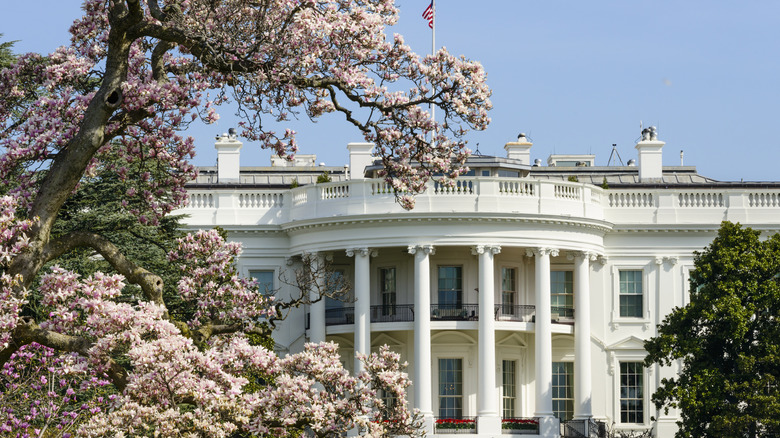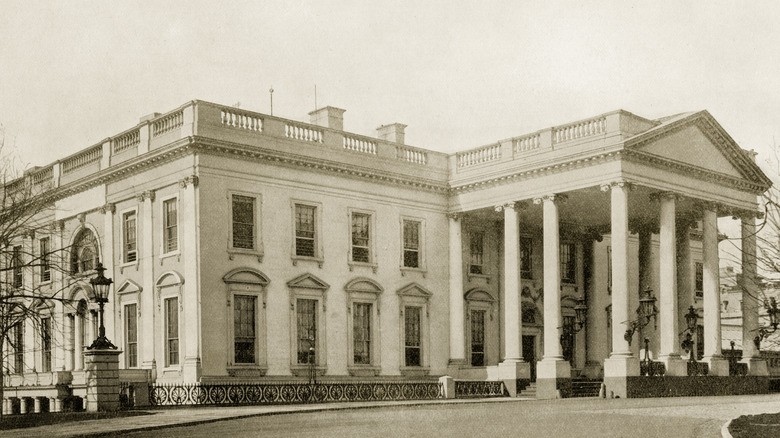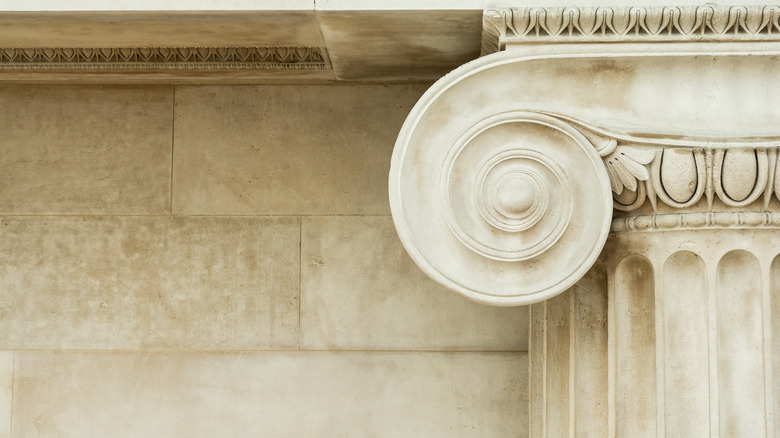The Architectural Style That Inspired The White House Columns
Washington DC is a city rich with architectural history stemming from the earliest days of the developing nation. This includes structures like the Capitol Building, monuments like the Lincoln Memorial, and of course, the White House, with its beautiful Greek Revival architecture. The home of various U.S. presidents for over two hundred years, the White House casts an impressive profile against the D.C. skyline and its signature columned front is instantly recognizable.
Those particular columns draw on the design influences of Ancient Greece, where structures like the Parthenon stood imposingly on the hill over Athens. Greek Revival is a style that emerged in the 18th century in Britain and gained immense popularity after architectural discoveries uncovered lost Roman cities like Pompeii and Herculaneum. The Romans, too, had been heavily influenced by their predecessors the Greeks, and these discoveries fueled public demand for both homes and public buildings of this style.
Greek Revival Style
In early America, the Greek Revival Style was a natural choice for the White House's newly selected architect, James Hoban, who began plotting the design of George Washington's abode in the 1790s. It was completed in 1800, however, over the past two centuries it has undergone several renovations, like its notable porticoes that were added by later presidents, including the rounded one on the south side created during James Monroe's presidency in 1824. It was augmented by an upper-level porch, known as the Truman balcony, in the 1940s.
Hallmarks of Greek Revival architecture include its signature columns, which populated Greek and Roman structures as one of their most defining features. The White House's ionic columns, taper as you move upwards, with decorative scrollwork at the top. The massive three-story columns greet visitors and draw the eye upward, increasing the sense of grandeur.
The overall layout is symmetrical, with four evenly spaced columns surrounding the colonnade on the north side, from which the two wings of the house extend on either side. The columns are topped by a triangular pediment at the top, popular in Greek structures like the Parthenon. In a slight variation, the first floor of the White House features a rusticated stone front, which is consistent with later 16th-century Palladian architecture developed by Andrea Palladio in Italy, who was also inspired by classical architecture.
Classical style, modern homes
Greek Revival Style was also a popular style for other public buildings in the 19th century and beyond — guiding the design of everything from monuments to schools to courthouses. You will see large column-fronted buildings far and wide in both Europe and the U.S. In America, the popularity of the style also influenced the concurrent Federal Style, known for its brick-fronted facades, metrical windows, and smaller-scale incorporation of columns and pediments.
While your home may not be as large or as imposing as the White House, there are a few ways you can incorporate Greek Revival elements into your aesthetic and home design. Columns, while perhaps at odds with some more modern exteriors, are still a great visual element to add in small doses — like in a garden colonnade or as a base for statuary. Inside, marble busts are experiencing renewed popularity due to light and dark academia trends propagated on social media like Instagram and TikTok.


